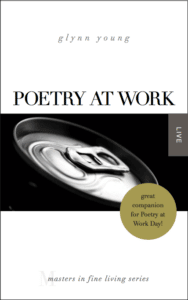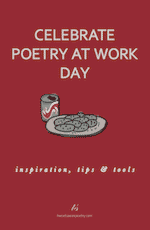The Poetry of Names at Work …
It’s Poetry at Work Day, and I find myself thinking about names in the workplace.
I’ve been long fascinated with the names of characters in the works of Charles Dickens. Many of them are descriptive of the characters they represent. Some he made up out of whole cloth. And some were borrowed, or stolen, from the names of real people. “Pickwick,” for example, came from the name of the owner of a coach firm in Bath. “Oliver Twiste” was the name of a real person. Dickens borrowed, and sometimes barely disguised, the names of friends, acquaintances, neighbors, and people mentioned in newspapers.
The names of these characters often contain their own poetry. While reading a paper from 1917 on the origins of the names of Dickens’ characters, I began to think about the names, and the poetry of names, of people I’ve known over more than four decades of work life. My own last name likely started life a millennium or two ago to differentiate a father from a son, or an older and younger brother.

What might be written about a Duckett, Snell, Scrimpshire, Bann, Pate, Driver, Stockwell, or Griffin? How about a Sparkman, a Bishop, a Hussey, a Crosson, a Wassell, a Struckman, a Needleman, or an Archer? Or a Fort, a Rapp, a Fetters, and a Hoppin. A Hartman and a Pierle. I’ve worked with a Broughton, a Boeger, a Liberato, a Marvel, a Cannon, an Isham, a Fullinwider, a Harness, a Stokes, a Kenworthy, and a Whittum.
The poetry at work is not only in the work that’s done; it’s also in the names of the people doing the work.

You can also consider writing a poem, or poems, about Zoom meetings and working remotely.
Work, in its many manifestations, occupies a considerable part of our lives. It’s not walled off from creativity, inspiration, art, or poetry. Look for it, write about it, celebrate it, and come back here to tell us about it.
Photo by Tweetspeak Poetry. Post by Glynn Young.
How to Read a Poem uses images like the mouse, the hive, the switch (from the Billy Collins poem)—to guide readers into new ways of understanding poems. Anthology included.
“I require all our incoming poetry students—in the MFA I direct—to buy and read this book.”
—Jeanetta Calhoun Mish
- Longfellow’s “Paul Revere’s Ride”: Creating a National Legend - April 17, 2025
- Poets and Poems: Katie Kalisz and “Flu Season” - April 15, 2025
- Poets and Poems: Michelle Ortega and “When You Ask Me, Why Paris?” - April 10, 2025


L.L. Barkat says
Glynn, this is a fun idea. (And it was cool to consider the beginnings of your own name! So, I guess someone with the last name Oldes was the older one? 🙂 )
Glynn says
The origins of my own surname might have been on my mind when I wrote this. A distant relative has been working on a family genealogy, which isn’t the easiest when your last name is common in America, Britain, and Scotland (22nd most common in Scotland, 44th in England). It’s also the #1 most common surname on Pitcairn Island, where the mutineers from the Bounty settled. While there’s a question about whether the William Young born in 1770 in Kentucky was the father of my great-great grandfather Franklin, we can trace the family back to Thomas the Younger in Scotland, born in 1550. The records are there likely because a Robert Young in the 1600s received a non-hereditary knighthood and decided to trace his ancestry. Alas, nothing earlier than Thomas in 1550 (or nothing Sir Robert wanted to talk about).
What’s interesting is that the name looks the same in several languages — Jung (German), Jong (Dutch), Yang (Chinese), Yong (Korean), Ljung (Swedish). In French, it’s Lejeune. The Anglicized “Young” is derived from the Germanic of the Angles and Saxons. All that history (and perhaps poetry) in a common last name!